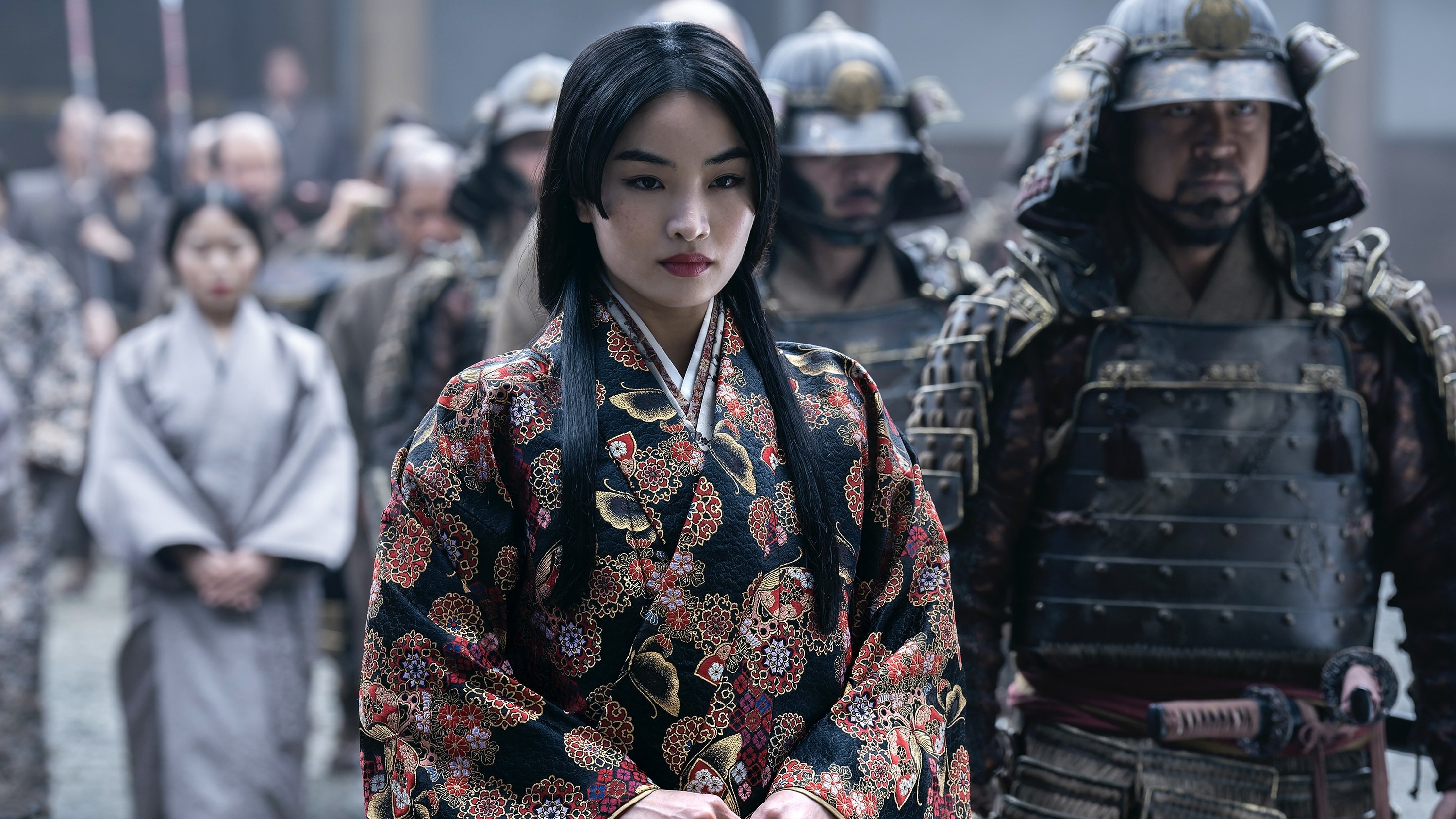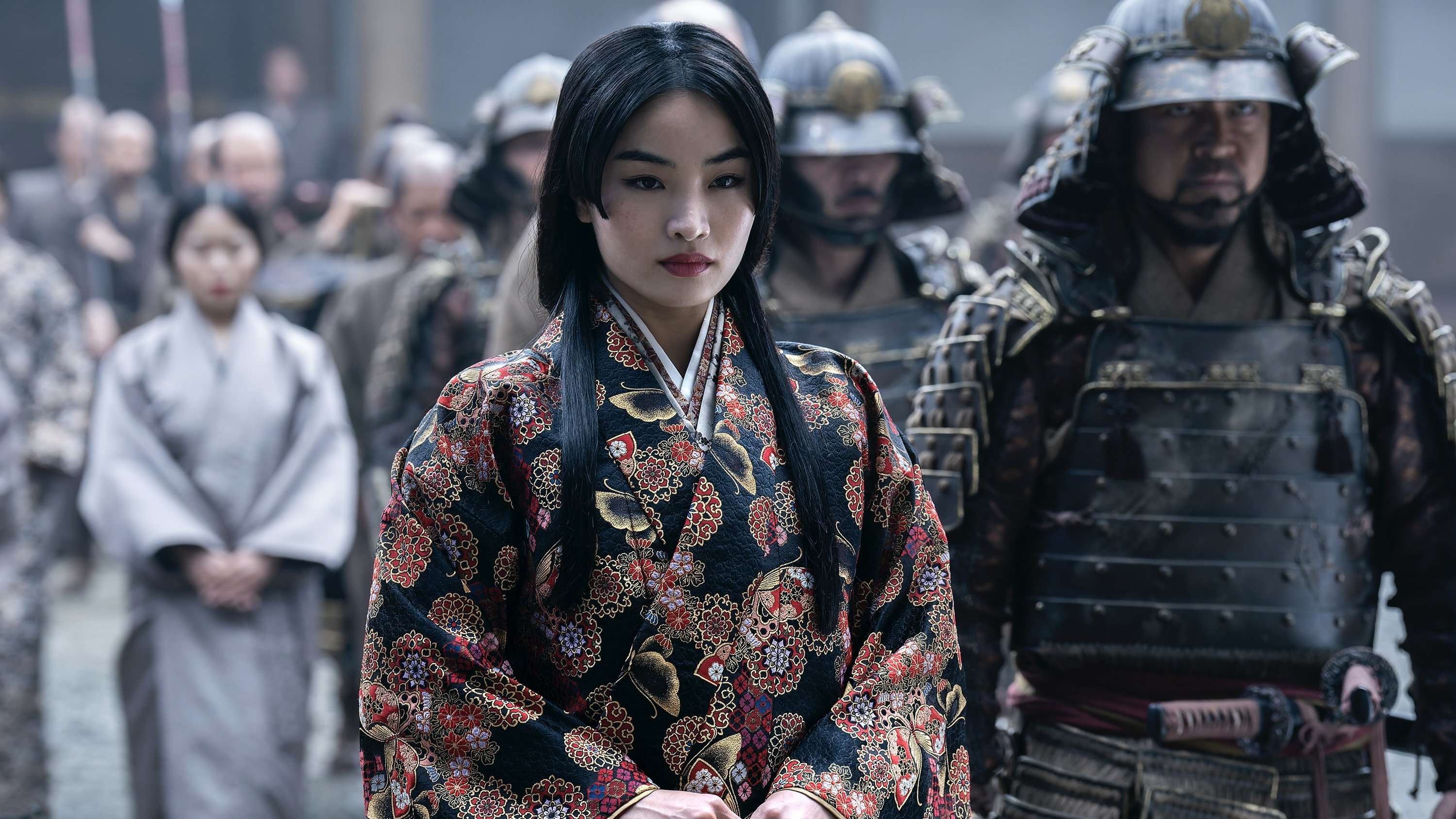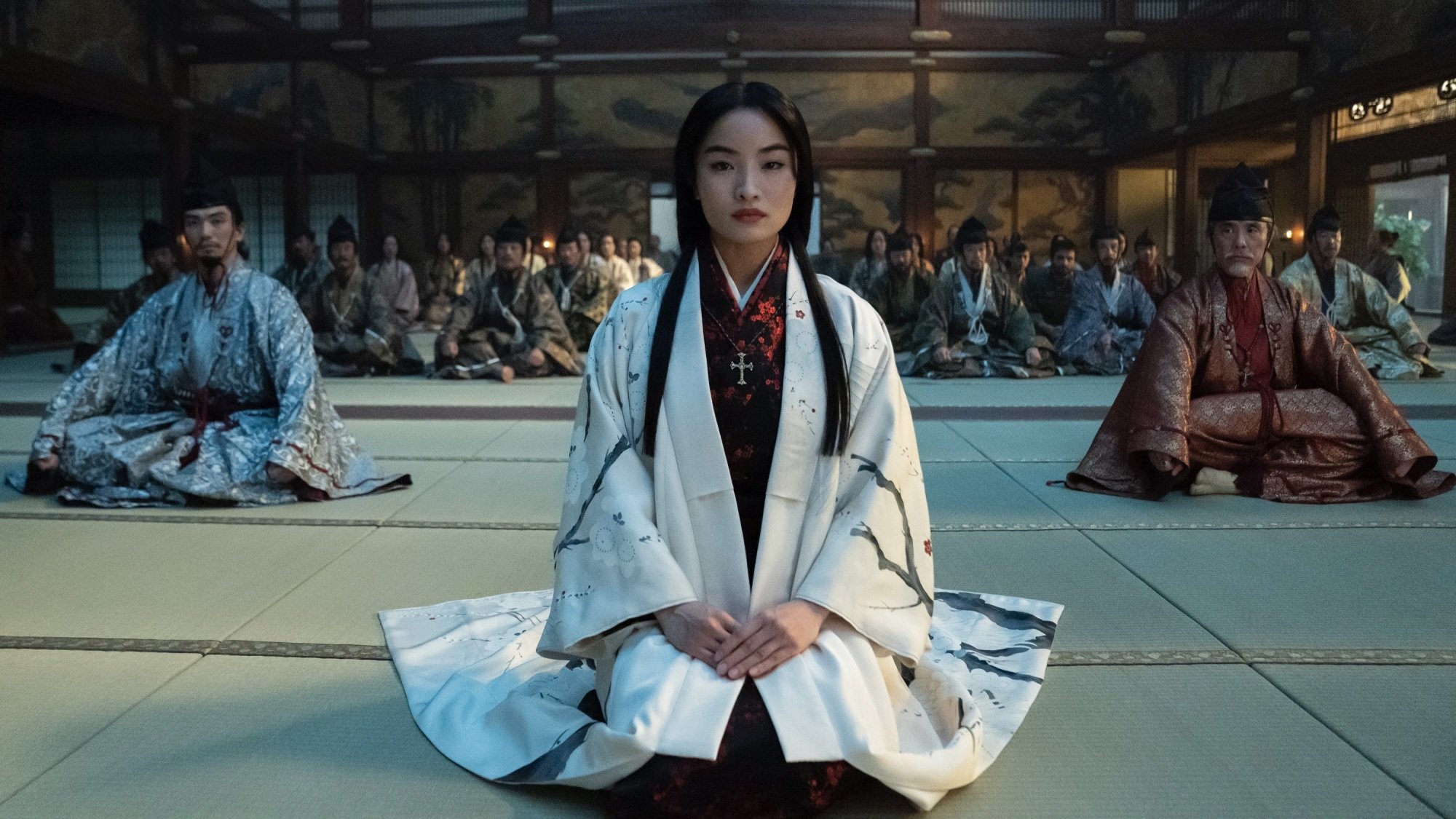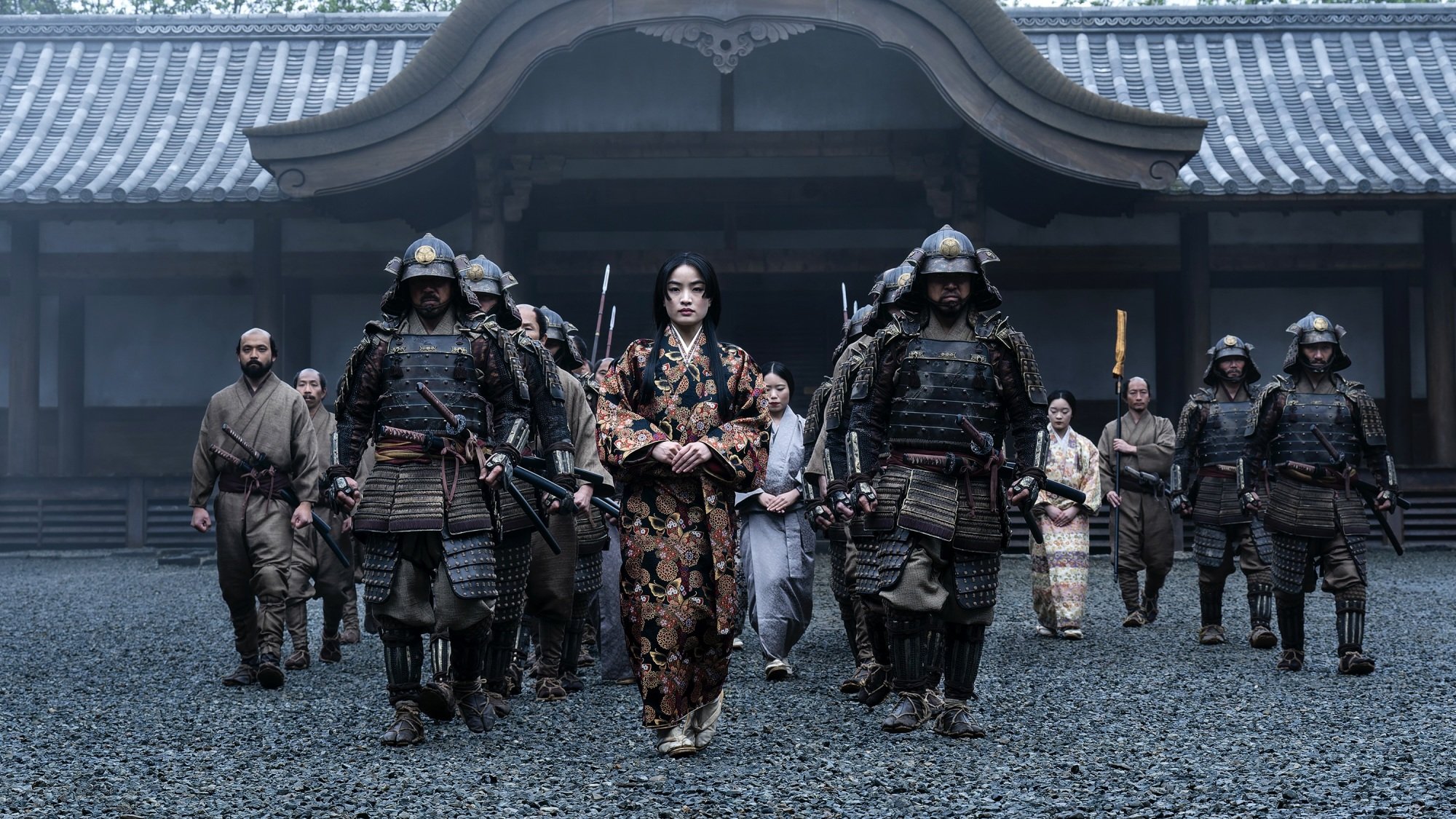

Shōgun is a series full of wily political operators, unpredictable fight scenes, and the occasional devastating earthquake. Yet the biggest obstacle our characters have had to face is none other than a single gate leading out of Osaka Castle — a gate which becomes the focus of two of Shōgun‘s best scenes.
In episode 3, “Tomorrow Is Tomorrow,” Yoshii Toranaga (Hiroyuki Sanada) must leave Osaka in order to avoid death at the hands of Ishido Kazunari (Takehiro Hira) and the rest of the Council of Regents. His plan to make it out of the city plays like something out of a farce, complete with faked labor pains and Toranaga switching places with his wife Kiri No Kata (Yoriko Dōguchi). Ishido’s men almost catch on to the ruse, but John Blackthorne’s (Cosmo Jarvis) improvised outrage on behalf of Kiri’s virtue manages to cause enough chaos to throw them off the scent. The entire sequence is a perfect balancing act of comedy and suspense, but the next time Shōgun returns to the gate leading out of Osaka Castle, we’re in for a much more somber affair.

Credit: Katie Yu / FX
Flash-forward to “Crimson Sky,” Shōgun‘s ninth entry and its most heartbreaking to date. The whole episode focuses on Toda Mariko (Anna Sawai) as she enacts the next stages of Toranaga’s plan for victory. She arrives in Osaka and requests that she leave the next day along with Kiri and Toranaga’s consort, Shizu No Kata (Mako Fujimoto). But that request, like so many elements of Shōgun, is not as simple as it may seem. That’s because Ishido won’t let any of the nobles staying in Osaka leave. Don’t call them hostages, though! He’d prefer you think of them as very secure guests.
Mariko’s demand to leave places Ishido in a tight spot. If he doesn’t allow her to go, he’s fully confirming that everyone in Osaka Castle is a prisoner. But if he does let her go, that sets a precedent for everyone else in the castle to leave as well. He states that he and the Council will deliberate, to which Mariko retorts that if she is unable to leave the next morning, she’ll have failed to do her duty to Toranaga, and will therefore have to commit seppuku.
That takes us to Shōgun‘s second iteration of the Osaka gate scene, a tense showdown during which a determined Mariko and her retinue advance through waves of guards and archers. Eventually, she is unable to continue and resigns herself to commit seppuku later that day.
With Mariko’s seemingly inevitable death on the horizon, and with the gradual attrition of her forces grinding her to a halt, this Osaka gate scene couldn’t feel more different than Toranaga’s madcap escape in episode 3. And yet that first escape sequence is key to understanding Mariko’s attempt to leave.
“Your job is to teach the audience how to watch the show,” Shōgun showrunner, co-creator, and executive producer Justin Marks told Mashable. “Everything in episode 3 is a setup for what happens in episode 9.” Episode 3 establishes not only the architecture of Osaka Castle — including the layout of that specific gate — but also the degree of difficulty it takes to escape.
Everything in episode 3 is a setup for what happens in episode 9.
“The real focus of it is that it took the most powerful man in Japan an incredible amount of subterfuge to [leave Osaka],” Marks said. “How is one woman going to walk out? The point is, she’s not. It’s theater, it’s performance art. That’s the essential part of this, which is to demonstrate all that [Ishido] will do to keep her from going, but for her to keep going anyway.”

Credit: Katie Yu / FX
Shōgun has always prepared us for the possibility that Mariko might die, especially since she’s asked for death so many times. Yet that possibility truly begins to feel like a reality during this gate sequence. Something as simple as a character trying to go from Point A to Point B becomes a deadly act, as episodes’ worth of context — including the difficulties of Toranaga’s episode 3 escape — bear down on Mariko’s every footstep.
“The entire season funnels to this one moment where a character is walking, trying to pass through a gate,” Shōgun co-creator and executive producer Rachel Kondo told Mashable. Kondo also wrote “Crimson Sky” along with Caillin Puente.
The entire season funnels to this one moment.
“The impression I got reading the book [by James Clavell] was that the 50 feet to that gate is a journey that Mariko has been trying to make for her entire life,” Marks added.
For Mariko, her attempt to leave Osaka and the subsequent declaration of seppuku are necessary services she must perform for Toranaga. But they’re also a chance for her death to serve a greater purpose in a cruel world that sometimes treats people as if they’re disposable.
“She’s fighting for more than just her own sense of resolution,” Kondo explained. “I think she was fighting for all the women who don’t ever get the chance for their deaths to mean something.”
Even though Mariko doesn’t die in this moment, “Crimson Sky” sees her face down death time and time again: First at the gate, then at her near-seppuku, then finally in a brutal third-act attack that does take her life. The constant proximity to death prepares us for her eventual farewell, and even though it may be tragic for the audience and for the characters around her, Marks believes that survival past this point would have crushed Mariko further.
“She would hate victory over death,” Marks said. “What she could no longer stand was to suppress her own wants in service of this world anymore. And she asserted that through an army trying to stop her.”
He added, of the gate scene, that “it’s the point where there’s no going back for Mariko. You realize the whole show has been about her. And if you thought it was about anyone else, then you probably weren’t watching closely enough.”
Shōgun is now streaming on Hulu, with the finale premiering April 23.
